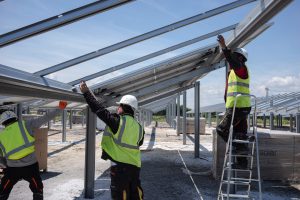
Lendlease to Use Vegetable Oil in Its U.K. Construction Projects
Lendlease, an Australia-based contractor, commits to stop using liquid fossil fuels on its United Kingdom construction spots. It launched a new initiative known as the Alternative Fuels Policy.
It seeks to replace gas with liquid, petrol, and diesel with vegetable oil to power pieces of machinery. The new policy is effective immediately for its latest and existing projects until Jan. 1, 2022.
This scheme is indeed an essential milestone to the company’s goal of total zero-carbon. Presently, the contractor uses about 400,000 liters or 106,000 gallons of diesel every year in the U.K. Completely removing the fuel will cut …



